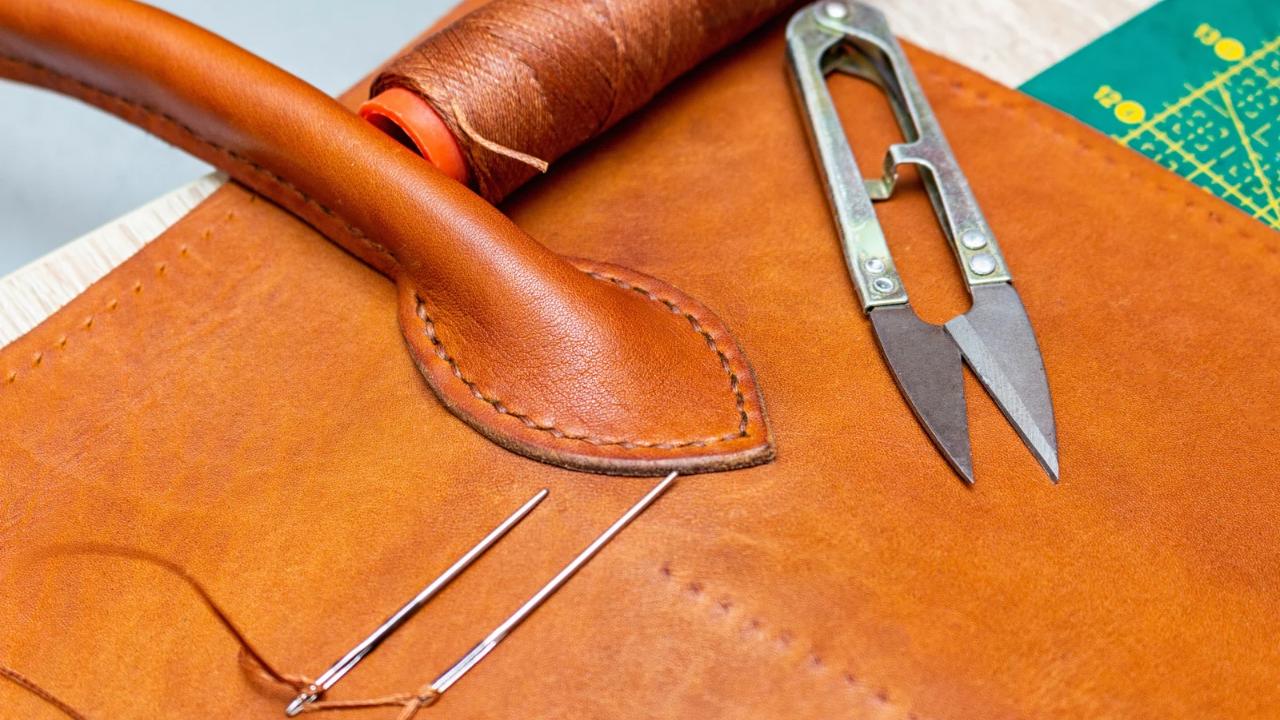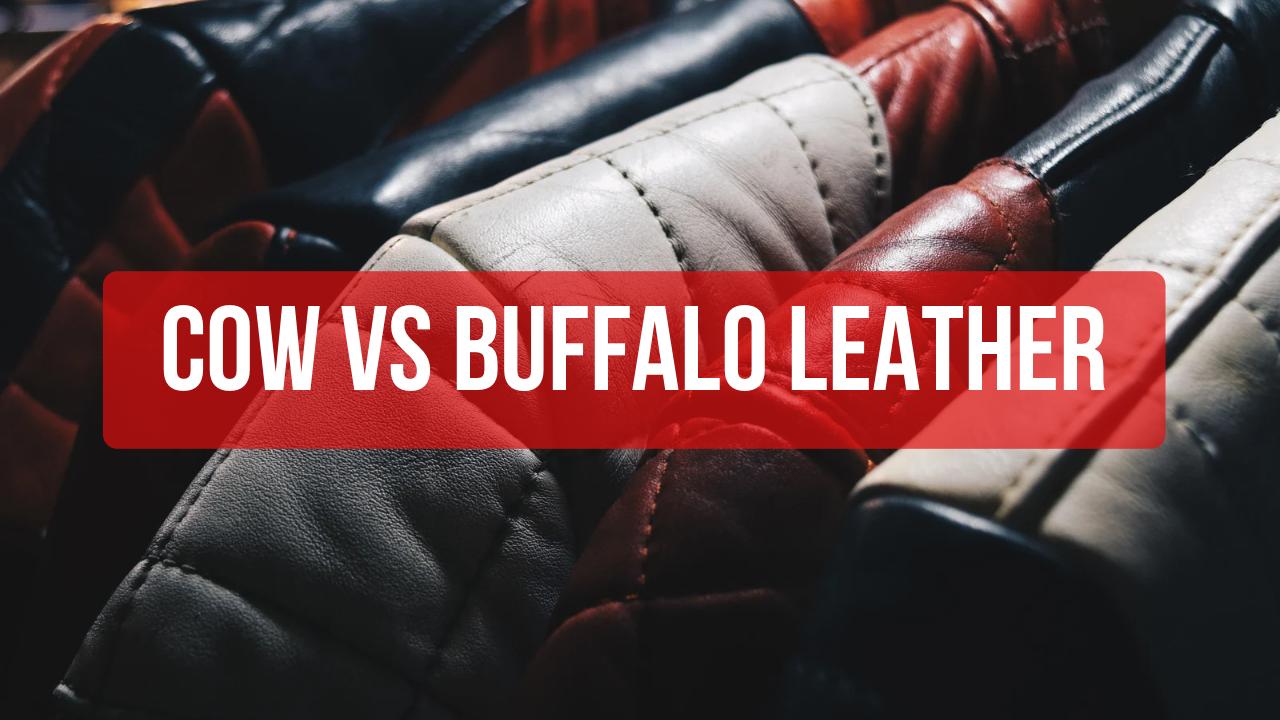Cow Leather Vs Buffalo Leather: A 5 Positive Perspective
When it comes to choosing between cow and buffalo leather, my hands-on experience working with various products—especially bags and jackets has taught me a lot about their unique qualities. Cow leather comes from hides that are more widely available, and what really makes it stand out is its consistent grain pattern, smoother finish, and refined look. It adapts beautifully in modern tanning and dyeing processes, giving it great personality and versatility, especially in accessories that demand both function and style. Whether I’m picking a stylish jacket or a sturdy bag, cow leather never fails to deliver a balanced feel with remarkable durability.
Cow Leather Vs Buffalo Leather: A 5 Positive Perspective
Compare the two leathers based on durability, flexibility, texture, appearance, and availability.
Buffalo leather offers toughness, a rugged look, and is ideal for heavy use.
Cow leather provides a smoother finish, is more flexible, and widely available—great for fashion and everyday items.
Choose based on your needs, not just toughness.
Key Differences in Performance and Use
| Feature | Cow Leather | Buffalo Leather |
| Durability | Strong, less rugged | Extra, tough, long-lasting |
| Flexibility | Softer, more, flexible | Stiffer, less flexible |
| Texture | Smoother, refined | Grainy, rugged |
| Weight | Lighter, easier to handle | Heavier, denser |
| Best For | Fashion, upholstery, accessories | Heavy-duty bags, belts, shoes |
Choose buffalo leather for toughness & longevity, and cow leather for comfort & flexibility.
Traditional to Modern: How Cow and Buffalo Leather Are Processed
In my time working with cow, buffalo, and even bison leather, I’ve seen how deeply rooted the processing practices are in age-old traditions passed down over centuries. While skilled artisans often rely on unique methods tailored to each type of hide, the industry today also embraces modern techniques using chemicals and controlled environments. For cowhide, for instance, tanning ensures the firmness and durable quality that’s expected in the material. This is followed by re-tanning, dyeing with patterns applied to the surface, and a final polished finish that gives it a ravishing appearance. In some cases, the hide is stretched or fattened, depending on which part of the industry it serves.
On the other hand, buffalo and bison hides follow more organic paths. Their processing skips synthetic additives and uses natural materials like vegetable oils and waxes. Before that, the cleaning process includes disinfectants and a de-liming stage to remove alkaline substances. This approach enhances the striking grain, keeps the structure intact, and prevents unwanted staining or overstretching. In my own workshop, I’ve seen how this method limits unnecessary stretching while improving elasticity and maintaining a slightly rigid yet flexible texture.
The advantages of each are clear depending on the final product. A tanned, smooth finish gives cow leather its signature versatility, ideal for fashion goods. Meanwhile, buffalo leather retains a rugged feel, great for heavy-duty goods. Whether you’re going for a sleek, refined style or a tough, long-lasting utility piece, knowing the full process behind each material helps guide its best use.
A Closer Look at Strength
In my work with leather, I’ve found that understanding the strength of different hides is crucial when choosing between cow and buffalo. Buffalo leather, including that from bison, typically comes from hides with greater thickness, especially in the top layer, where the full grain remains unbuffed and untouched. This gives it a rugged toughness and makes it one of the strongest types of leather you can buy. It maintains its natural elasticity because it is less stretched during tanning, making it ideal for products that demand raw toughness and long-term durability. From experience, I can say these grades of leather feel more robust, perfect for heavy-use items where strength is everything.
 In contrast, cow leather is often processed more extensively, including dyeing and absorption treatments that slightly reduce its firmness but enhance its refined look. Many manufacturers still prefer it for its smooth feel and reliable performance. Preserve the detail, and you’ll notice how the grain stands out with a vibrant character. While not always the toughest, it provides a sturdy, versatile alternative in fashion or upholstery work. There are many available options depending on the grade, each suited to different uses, whether you’re aiming for something rugged or a more elegant finish using raw or tanned material.
In contrast, cow leather is often processed more extensively, including dyeing and absorption treatments that slightly reduce its firmness but enhance its refined look. Many manufacturers still prefer it for its smooth feel and reliable performance. Preserve the detail, and you’ll notice how the grain stands out with a vibrant character. While not always the toughest, it provides a sturdy, versatile alternative in fashion or upholstery work. There are many available options depending on the grade, each suited to different uses, whether you’re aiming for something rugged or a more elegant finish using raw or tanned material.
Built to Last: How Durable Are They?
In my years working with leather, one thing has stayed clear—whether it’s cowhide or buffalo, both are naturally strong and durable. Each material is crafted to last for many years, and in some cases, even decades, if properly maintained. But the real advantage comes down to how the types behave over time. Buffalo leather is rarely stretched during processing, helping it retain its rigid, tough build. That same structure gives it the ability to survive for over a century, which is why it’s considered one of the longest-lasting options available.
On the other hand, cowhide has more stretch and elasticity, which doesn’t necessarily mean less strength, but it does differ in how it holds up with age. I’ve seen full-grain cowhide pieces that, when well cared for, still look good after decades. The quality of each item and how it’s used plays a big role in its lifespan. Though similar in toughness, the buffalo leather’s natural resistance gives it a clear edge when compared to cowhide, especially if you need a product that can handle time and wear with minimal change.
The Look and Feel: A Visual Comparison
From years of handling different leather types in my workshop, I’ve seen how much the appearance of cow, buffalo, and bison leather truly varies. The grain, patterning, and how the hides are processed all play a role. Cowhides are often stretched, which makes them bigger and gives a flatter, tighter surface. In contrast, buffalo hides tend to remain more compact. The natural texture of full-grain and top-grain buffalo leather is more pronounced, often coarse with a dark, brown shade that gives it a distinctive look.
Cowhide feels smoother to the touch, with a grainy texture and smaller pores. It can have a hairy finish and a lighter tone, which makes it visually quite different from buffalo. In my experience, artisans and manufacturers take special care to protect the vibrant details of each type, often working to ensure the finish retains its natural beauty. Granular pattern in buffalo leather is usually buffed only minimally, keeping its authentic character, while cow leather is usually polished for a smoother look.
Over the years, using a good leather cleaner and conditioner helps maintain the quality and appearance of both types, whether used in accessories, bags, or other manufactured goods. Each skin from these animal sources has its own unique story. In comparison, buffalo leather’s visible texture naturally stands out more, giving it an edge for those who appreciate bold grain and raw finish.
Practical Everyday Uses in Fashion and Living
In my experience working with different materials, both buffalo and cowhide leather stand out for their strong nature and ability to handle regular wear and tear. Buffalo leather, known for its toughness and resilience, is a preferred choice in heavy-use items like boots, gloves, and jackets. Its durable quality makes it the perfect pick for mountaineer gear and high-stress furniture pieces such as sofas, chairs, and mattresses, where flexible fibers help absorb movement and maintain shape. Because it doesn’t get dusty easily, it’s also a great option for coverings in households with frequent use.
On the other hand, cowhide leather is widely used in fashion and home décor because of its elegant appearance and classy finish. You’ll find it in handbag collections, including purses, wallets, briefcases, and backpacks, where its soft texture and rich tone offer a dazzling look. It’s also an ideal material for belts, rugs, carpets, pillow covers, and decorative hangings that add a unique touch to interior spaces. Designers often experiment with dyed patterns and artistic treatments, which makes cowhide leather a stylish, trendy option in today’s high demand lifestyle products.
Superior Quality and Adaptability
In my work with leather products, I’ve come to admire how buffalo leather stands out for its exemplary toughness. Its extra strong collagen fibers make it incredibly resistant to wear, tear, and even dust or impurities, which it tends to repel with ease. These standout features make it especially well adapted to temperature changes, whether in mountains or deserts. Over time, the leather becomes comfortable and cozy, naturally molding to the user’s needs, which makes it a perfect material for demanding outdoor conditions. The durable structure adds to its long-lasting value in tough environments.
On the other hand, cowhide leather is one of the most practical choices in today’s market, known for being incredibly versatile and stretchable by nature. It can conform easily to any desired product, making it the preferred material across multiple industries. It’s soft, yet provides impressive strength, reliable insulation, and even some water resistance. From my perspective, cowhide’s balance of flexibility and performance makes it ideal for both structured fashion goods and functional gear.
Origin of Leather
From my years of working in the leather trade, I’ve seen how the origin of leather affects its quality and application. Buffalo leather is procured from several breeds across different regions of the world, including the Asian water buffalo, North American Bison, and African cape buffalo. Each variety brings its own texture and toughness to the final product. In contrast, cow leather is usually obtained from mature cows and calves, making it a more widely available material used in large-scale production for fashion, upholstery, and industrial needs.
Leather Supply and Availability
In my experience working closely with leather manufacturers, cow leather is much easier to procure because of the wider, dense distribution of the cow population across the world. It’s estimated that nearly half of all leather goods manufactured globally come from cowhides. The meat and dairy industry play a significant role, constantly churning out higher amounts of hides. As beef remains in high demand, the supply of cow leather stays steady and sustainable, making it readily available and an accessible, commonly used option in the market.
By contrast, buffaloes are widely employed in labor-intensive work like ploughing agricultural lands and producing milk, which naturally limits leather availability. Compared to cows and calves, the buffalo population is relatively lower, resulting in fewer hides being processed. This makes buffalo leather more muted in terms of sourcing and harder to find in commercial channels. The difference in availability adds to why cow leather is preferred in high-volume production, while buffalo leather remains more selective and purpose-driven.
FAQ
Which Leather is the Best Choice?
If durability tops your list, buffalo leather should be your pick. With an epidermal layer nearly three times thicker than cowhide, it offers unmatched strength and a solid, robust build—yet it still holds on to some flexibility.
However, if you're after something thinner, softer, and easier to work with, cowhide wins. Its smooth, tanned finish makes it a go-to for jackets, upholstery, and accessories, offering both style and comfort for more refined applications. Your purpose makes all the difference.
Why Is Buffalo Leather More Expensive?
Buffalo and bison leather come with a higher price tag due to their exceptional strength, dense structure, and premium quality. While sourced from large animals, the hide area is smaller because it's not stretched like cow leather, resulting in a tougher, more durable material that outperforms many traditional options.
What Is the Cheapest Type of Leather?
Cowhide leather is typically the most affordable, but its price can vary widely based on finish, grade, and quality—offering flexible options for different budgets without compromising on style or function.
What Are the 5 Grades of Leather?
The five grades of leather are: full grain, top grain, genuine leather (or premium), split-grain, and bonded leather—ranked from highest quality to lowest. While full grain and top grain are the most durable, genuine offers a balance of quality and cost, and split-grain and bonded are often used in budget products.


